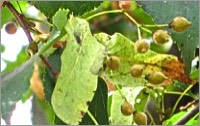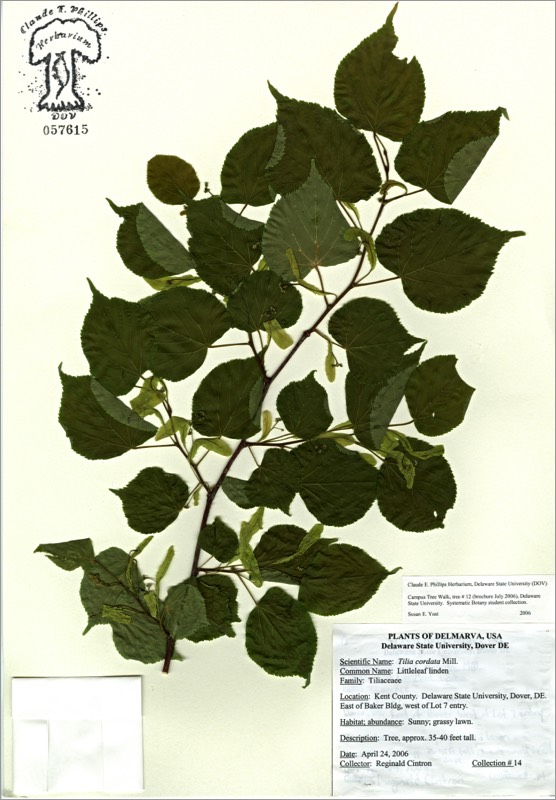*Tilia cordata


*Tilia cordata
LITTLELEAF LINDEN
Tiliaceae
Eurasia
Location: map coordinates O-13 (east of Baker Building), N 39°11'9'' W 75°32'39''
Planting history: presently unknown.
Description:
*Non-native species (not native to Delaware)
LITTLELEAF LINDEN
Tiliaceae
Eurasia
Location: map coordinates O-13 (east of Baker Building), N 39°11'9'' W 75°32'39''
Planting history: presently unknown.
Description:
- medium- to large-sized deciduous tree
- etymology: Tilia = the Latin name; cordata = heart-shaped (leaves)
- also called “lime-tree” (in Britain), and “tilleul” in parts of Europe
- leaves simple, heart-shaped
- flowers small, fragrant, yellowish, in clusters, in spring; attract pollinators like honeybees (hence linden honey). Linden tea made from dried flower clusters; flavorful, and also used medicinally for colds, fever, high blood pressure etc.
- fruit a nutlet attached to a green wing-like bract (modified leaf), which acts like a spinning parachute for seed dispersal
- very popular street tree which resists aderse city conditions; form symmetrical. (“Unter den Linden” is a famous boulevard in the historic district of Berlin, named for a different linden species, the silver linden, planted there)
- the famous Swedish botanist Linnaeus’ family name was derived from the old “warden” linden tree on the family property
*Non-native species (not native to Delaware)


HIT REFRESH TO START LOCATION GRAPHIC